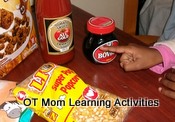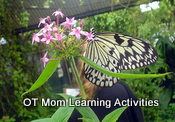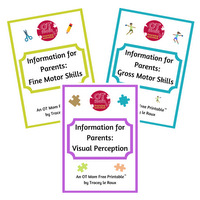- Home Page
- Visual Perception Activities
- What Is Visual Perception
What Is Visual Perception?
I sometimes link to products (#Ad) that are similar to those I use and love. If you do purchase something through my links, I will receive a small commission that helps support my site - thank you!
What is visual perception? How does visual perception work? On this page, I try to answer these questions, illustrated with an example from everyday childhood life.
- What is visual perception?
- How does visual perception work? A practical illustration from a child's life!
- More information about visual perception

What Is Visual Perception?
Visual perception is about making sense of what you see. The eyes send visual information to the brain, and then the brain needs to interpret the information and make sense of it all.
Here are just a few examples from everyday life...
- When we read a book, our brain takes the information about the black squiggles that we see, matches them with what we have already learnt and helps us to recognize them as letters and words. Visual memory and form constancy are at work here.
- When we write something, our brain processes where the lines on the paper are, helps us to keep our work on the line, and helps us to check that the letters and words are correctly formed. This is visual-motor integration.
 Reading Food Labels
Reading Food Labels- When we look at the small printed list of ingredients on a food package, visual perception enables us to spot the allergens in bold print. This is a visual discrimination skill.
- When we look at a map, the eyes send all the visual
information to the brain, which processes it and helps us to focus on
the important small location details that we need. Figure-ground perception helps us with this.
- When we see a partially obscured
road sign, our brain takes the partial visual information sent by the
eyes, and matches it to previous information, and/or fills in the
missing information so we can understand the sign. This is a visual closure skill.
From the examples above, I hope it is clear that when visual perceptual development is delayed, this can impact a child's ability to function effectively.
To read more about how visual perception helps with reading, writing and math, take a look at this article on my site.
How Does Visual Perception Work?
A Practical Illustration From A Child's Life...
The scenario described below will hopefully give you some insight into the way visual perception enables us to experience and respond to everyday situations outside of formal learning.
 Can you see the butterfly?
Can you see the butterfly?Picture a little boy spotting some movement on a flower at the other side of the garden. His eyes spotted the movement and his brain has decided that the information is worth noticing.
Using the information from his eyes, his brain processes that the interesting object is a little distance away and not close by, and the little boy gets up to walk closer.
As he gets closer, his brain processes the shape and detail of the moving object and matches it up against the information already in his brain and makes a match – it is a butterfly! Excited now, the little boy keeps moving closer.
On the way, still watching the butterfly, he steps around the toys he left lying on the grass. His peripheral vision noticed the cars and his brain processed this information and enabled him to step around them.
 Admiring the butterfly requires visual perception to appreciate what you are seeing
Admiring the butterfly requires visual perception to appreciate what you are seeingAs he walks, he is getting closer and closer to the butterfly. His eyes send information in 3 dimensions (depth perception) to his brain. His brain will process the information and tell his body when to stop so the butterfly does not get squashed.
The little boy spends some time admiring the butterfly’s pretty wings.
His visual discrimination and figure-ground perception skills enable him to identify colors, shapes and patterns on the wings and to spot the butterfly’s compound eyes. His visual perceptual skills make this possible.
Oh! The butterfly has decided to fly away. The little boy’s eyes work together to track its flight path up and over the garden wall.
Inspired, the little boy runs inside and draws a lovely picture of the symmetrical wings of the butterfly, using his visual memory of what he has seen. His mom writes out the word “butterfly” and our little chap copies them down.
I hope you noticed the word "processing" - I had to use it a lot!
So in answer to the question "what is visual perception", I hope you understand that...
Visual perception is all about your brain PROCESSING what you SEE,
helping you make sense of it and then directing your actions accordingly.
In the above example, if the child's visual perception skills had been poor...
- the boy may not have been able to spot the butterfly, identify the butterfly as a butterfly, or recognize the colors and shapes on the wings.
- he may even have accidentally squashed it by coming too close.
- it would have been challenging for him to remember and draw what he had seen, and it would have been very hard for him to copy the letters out.
Related Pages
I have many pages on my site to help you understand more about visual perception and how to help your child develop these important skills.
So please feel free to browse and be empowered!
Thank you for visiting my site! I hope you found this page helpful!
- Home Page
- Visual Perception Activities
- What Is Visual Perception
Share this page to help others!
Didn't find what you were looking for? Try a search of my site!






